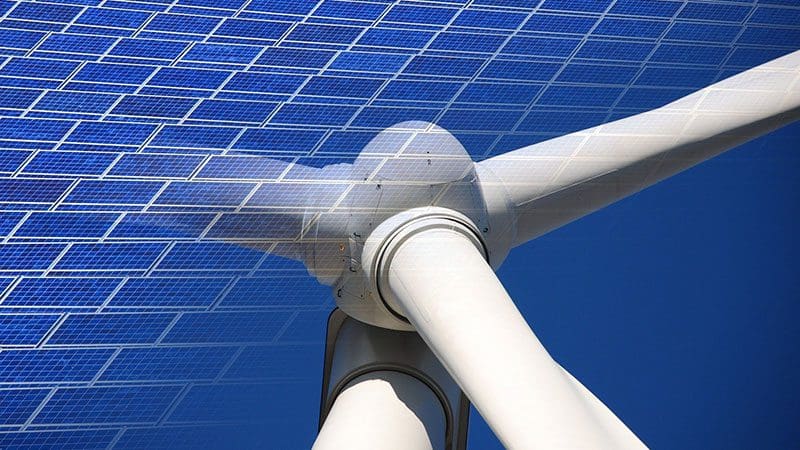2022: Second Greenest Year for UK Grid
Last year had the highest proportion of renewable generation on the grid since the depths of the 2020 lockdown. This is an ongoing positive trend. However it’s matched with ever-increasing non-energy costs (hence electricity prices doubling over the year) and grid vulnerability, with infrastructure costs rising especially fast: £3bn grid reinforcement alone for each GW of new offshore wind. Our dismal regulatory and contracting system is the main reason for this: the Putin premium is only icing on the cake. With sufficient large-scale, long-duration, naturally inertial electricity storage and cheaper, plentiful hydrogen, all of which we offer, we can solve all these challenges.
60% of Manufacturers Fear Blackouts
There are widespread and increasing fears of black-outs in the UK due to lack of energy security. This isn’t just confined to the UK. The world is waking up to what we’ve been saying since 2016: no grid can rely on imports through interconnectors during times of system stress, because neighbouring grids’ peak demand largely coincide. The only true solution is sufficient large-scale long-duration electricity storage.
Hydrogen Mains Pipes
Building hydrogen mains like this Germany-Norway one, the Dutch hydrogen ring main and many national projects is an important step in decarbonisation. But there are 2 missing links to be adressed: creation and storage of hydrogen. They also apply to chemical/fuel synthesis and other processes.
Creation: electrolysis (and all other methods) hates intermittency which reduces both efficiency and plant life, and requires investment in many times more capacity per unit of output. Removing this intermittency needs cost-effective electricity storage at massive (GW) scale and long (multi-hour to multi-day) duration, which is efficient and long-lived, of which Storelectric’s Green CAES is by far the best in every way.
Storage: there is no other realistic and cost-effective way to store hydrogen than salt caverns, probably adjacent to those used for CAES.
Storelectric offers all of this. These will enable renewables to power the grids cost-effectively by greatly reducing grid construction costs and the non-energy costs of electricity, while also enabling the hydrogen economy. And the more integrated such projects are, the more efficient and cost-effective they will be.
IEA: Innovation in Green Hydrogen
The IEA’s monitoring of patent applications show that the energy industry is moving towards green hydrogen. The fact that this is from analysis of patents shows that the shift is long-term. But, as outlined above, hydrogen hates intermittency, which reduces efficiency and plant life while requiring many more electrolysers per unit output – and the same applies to all plants that use it, such as fuel/chemical synthesis, iron and steel works. Storelectric can integrate its world-leading CAES to take out that intermittency and make the overall system much more efficient and cost-effective, and store the resultant hydrogen in the world’s most cost-effective way, in adjacent caverns.
8GW New Wind Farms in Irish and North Seas
The Crown Estate has signed leases for 8GW new wind in the Irish Sea and North Sea. Recent announcements from Ofgem (see last newsletter) showed that new offshore wind requires ~£3bn grid reinforcement for each GW generation – which we could halve (at a cost of £0.5bn) by connecting it through our suitably-scaled storage, in additional to the immense savings in the non-energy cost of electricity system operation. So why are BEIS (the UK ministry) and NGET (National Grid Electricity Transmission) refusing so adamantly even to analyse the benefits of doing one, creating a model for all?
National Grid Operability Strategy
National Grid has recently issued its Operability Strategy to 2035. It is a profoundly worrying document that will inevitably lead to increased electricity system costs, vulnerability and fragility. See Mark’s Blog, below.
Locational Pricing: Failing to Address the Issue
National Grid and others are obsessed with locational pricing, supported by a recent report by the Energy Catapult. But this is a way of avoiding the issue, which is network constraints preventing the construction of clean energy assets – whether they be generation or storage. Most forecasters predict that the grid will have to at least triple in size (e.g. Breakthrough Energy, McKinsey) unless renewables are connected through storage of sufficient scale and duration. And see the blog below for other hazards of locational pricing.
Review of the Year
It’s been a really momentous year for both Storelectric and the market. Storelectric has:
- Recruited a very high-powered group of advisors, and strengthened its team with excellent people (not all featured on our website) – the team is really humming now;
- Entered into exclusive negotiations on one site, well progressed in two more, with another 4-5 following behind, all in the UK, with international interest and opportunities too;
- Entered partnerships with Emerald and with Durham University
- Raised almost £2m and continuing to raise money faster than we’re spending it – and we’re still looking for 8 or 9 figure funding to support our roll-out: we’re almost unique in being a real-world business (as opposed to virtual) with multi-unicorn potential;
- Developed our capabilities to really integrate our electricity storage and hydrogen technologies in the renewable energy and Net Zero industry markets;
- Increased our profile in the market, both nationally and internationally;
- Become go-to authorities for a number of conferences and news outlets.
In the markets,
- China has proved the need for adiabatic CAES within a renewable energy system, opening a new plant in May and with a programme for at least 7-8 more – despite having a technology that is much dearer and less efficient than ours (see our October newsletter);
- Other competitors’ technologies are similarly inferior to and more expensive than ours, and ours, as it uses readily available equipment, can be made at a much greater range of sizes and operating pressures – this last opening up a much broader range of locations;
- Advances in the hydrogen agenda are magnifying the need for our systems integration and massive-scale storage, the only cost-effective way of storing such large volumes currently;
- Ministries, regulators and grids are looking longer-term and thinking more broadly about the energy system – though there’s still a long way to go on both (see our July and September newsletters);
- Putin (with gas) and France (with nuclear) have proved what we’ve been saying since 2016: no country can rely on imports for its needs, as no grid operator will ever tell their government that a city’s black-out was because they were exporting the energy needed – the only sustainable solution is sufficient storage of both electricity and hydrogen;
- The UK has been flirting with blackouts for months, despite powering up our coal-fired power stations, due to lack of sufficient long-duration storage;
- Due to the lack of sufficient large-scale, long-duration, naturally-inertial storage, the non-energy costs of the electricity grid are over £8bn more last year than just 3 years before, and rising exponentially, split roughly:
- ¼ for energy balancing costs,
- ¼ for grid operability, stability, reliability, resilience etc, and
- ½ for reinforcing the grid;
- Analysts realised that Europe needs 600GW storage by 2050 – we beg to differ, that’s much less than the true need which is also increased by the demands of green electrolysis. This is how to calculate the need for storage in any market.
- Europe’s RePowerEU Plan requires a massive roll-out of both hydrogen and electricity storage, at our scale.


